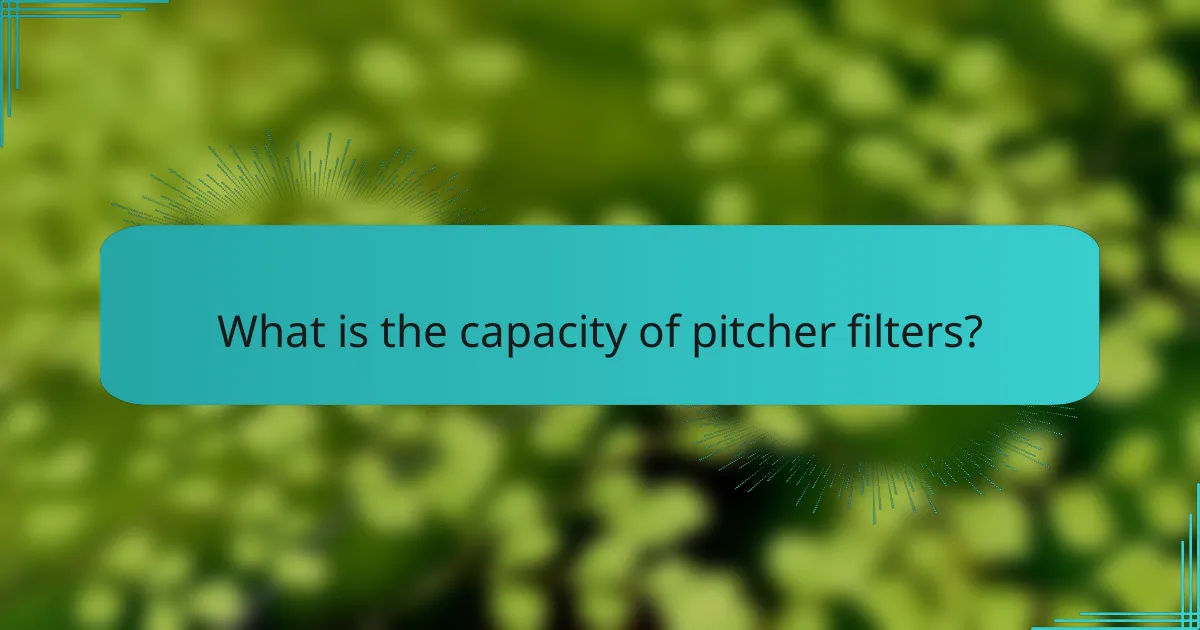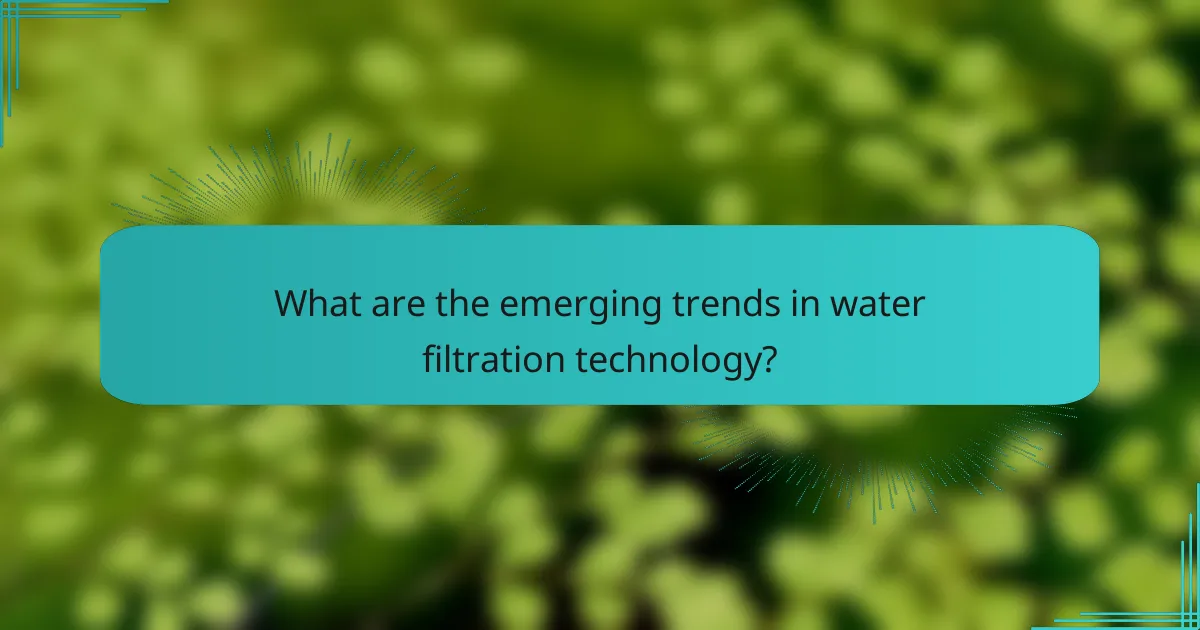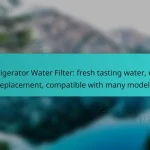Pitcher filters offer a convenient solution for clean drinking water, with capacities typically ranging from 1 to 3 liters to suit various household needs. Regular filter changes, usually every two to three months, are essential for maintaining optimal performance and water safety. Designed for ease of use, these pitchers feature ergonomic designs and intuitive mechanisms, ensuring a hassle-free experience for users.

What is the capacity of pitcher filters?
The capacity of pitcher filters typically ranges from about 1 to 3 liters, depending on the model and brand. Choosing the right capacity is essential for meeting your household’s water consumption needs without frequent refills.
Standard capacity of Brita pitchers
Brita pitchers generally have a standard capacity of around 2.4 liters, which provides enough filtered water for daily use in an average household. This size is convenient for storing in most refrigerator doors and allows for easy pouring.
When using a Brita pitcher, it’s advisable to refill it regularly, especially if you have a larger family or consume a lot of water. The filter typically lasts for about 40 gallons or two months, depending on usage.
Large capacity options from ZeroWater
ZeroWater offers larger pitcher options with capacities up to 3.5 liters, making them suitable for families or individuals who prefer fewer refills. These pitchers are designed to remove more contaminants than standard filters, which can be beneficial for those concerned about water quality.
With a larger capacity, ZeroWater pitchers may require longer filter replacement intervals, but it’s essential to monitor the filter change indicators to ensure optimal performance.
Comparison of capacities among popular brands
When comparing pitcher filter capacities among brands, Brita, ZeroWater, and PUR are commonly referenced. Brita typically offers 2.4-liter models, while ZeroWater provides options up to 3.5 liters. PUR pitchers usually fall within the 2.5-liter range.
Consider your household’s water consumption when choosing a pitcher. If you frequently entertain guests or have a larger family, opting for a larger capacity model may save you time and effort in refilling.

How often should you change pitcher filter cartridges?
Pitcher filter cartridges should typically be changed every two to three months, depending on usage and water quality. Regularly replacing filters ensures optimal performance and safe drinking water.
Recommended change frequency for Brita filters
For Brita filters, it is recommended to change the cartridge every 40 gallons or approximately every two months. This frequency may vary based on your water quality and consumption habits. If you notice a change in taste or odor, it’s wise to replace the filter sooner.
Indicators for changing ZeroWater filters
ZeroWater filters should be replaced after filtering about 40 gallons of water, similar to Brita. However, ZeroWater also provides a total dissolved solids (TDS) meter, which can help you determine when to change the filter based on water quality. When the TDS reading exceeds 006 ppm, it’s time for a replacement.
Signs of filter saturation
Common signs of filter saturation include a noticeable change in water taste or odor, slower filtration rates, and visible discoloration of the filter. If your pitcher takes longer to fill or the water tastes off, these are clear indicators that the filter needs to be changed. Regularly monitoring these signs can help maintain water quality and ensure safe drinking water.

What are the ease of use features of pitcher filters?
Pitcher filters are designed with user convenience in mind, featuring ergonomic designs, intuitive filter replacement mechanisms, and user-friendly functionalities. These aspects enhance the overall experience, making it simple to enjoy clean drinking water.
Ergonomic designs of Brita pitchers
Brita pitchers often feature a sleek, lightweight design that makes them easy to handle and pour. Their comfortable grip and balanced weight distribution allow for effortless pouring, even when full. Additionally, many models have a flip-top lid for easy filling without removing the entire lid.
Some Brita pitchers include a built-in filter change indicator, which alerts users when it’s time to replace the filter, ensuring optimal performance without guesswork.
Filter replacement mechanisms of ZeroWater pitchers
ZeroWater pitchers utilize a straightforward filter replacement mechanism that involves simply removing the old filter and inserting a new one. This process is designed to be quick and mess-free, allowing users to maintain their pitchers with minimal effort.
ZeroWater pitchers also come with a TDS (Total Dissolved Solids) meter, which helps users determine when to change the filter based on water quality, ensuring that the filtration system remains effective.
User-friendly features of PUR pitchers
PUR pitchers are equipped with features that enhance usability, such as a comfortable handle and a spout designed for precise pouring. The pitchers often have a clear water level indicator, allowing users to see how much water is left at a glance.
Many PUR models include an electronic filter change indicator, which tracks usage and alerts users when it’s time to replace the filter. This feature helps maintain water quality and ensures that users are always drinking filtered water.

What are the benefits of using pitcher filters in the UK?
Pitcher filters provide a convenient and cost-effective way to improve tap water quality in the UK. They typically enhance taste and reduce contaminants, making drinking water safer and more enjoyable.
Cost savings compared to bottled water
Using pitcher filters can lead to significant cost savings over time compared to purchasing bottled water. A single pitcher filter can cost around £20 to £30, while bottled water expenses can add up to hundreds of pounds annually for regular consumers.
For example, if a household spends approximately £1 per bottle and consumes two bottles daily, the yearly cost would exceed £700. In contrast, a pitcher filter can provide filtered water for just a few pence per litre, making it a more economical choice.
Environmental impact of using pitcher filters
Pitcher filters contribute positively to the environment by reducing plastic waste associated with bottled water. Each year, millions of plastic bottles end up in landfills and oceans, causing significant ecological harm.
By switching to a pitcher filter, households can decrease their reliance on single-use plastics. This not only helps in reducing pollution but also promotes a more sustainable lifestyle, aligning with the UK’s goals for environmental conservation.

What factors should you consider when choosing a pitcher filter?
When selecting a pitcher filter, consider capacity, filter change indicators, and ease of use. These factors will help ensure you choose a model that meets your water filtration needs efficiently and conveniently.
Filter technology options
Different pitcher filters utilize various technologies, including activated carbon, ion exchange, and reverse osmosis. Activated carbon filters are effective for removing chlorine and improving taste, while ion exchange filters can reduce heavy metals. Reverse osmosis systems provide thorough purification but may be less common in pitcher designs.
When evaluating filter technology, check for certifications from organizations like NSF International, which indicate compliance with safety and performance standards. This ensures that the filter effectively removes contaminants as advertised.
Brand reliability and reviews
Brand reliability plays a crucial role in choosing a pitcher filter. Established brands often have a proven track record of quality and customer satisfaction. Look for brands that offer warranties and responsive customer service to address any issues that may arise.
Reading user reviews can provide insights into the performance and durability of specific models. Pay attention to comments about filter lifespan, ease of changing filters, and overall satisfaction. Aim for products with a high number of positive reviews to increase the likelihood of a successful purchase.

How do pitcher filters compare to other water filtration systems?
Pitcher filters are a convenient and affordable option for improving water quality, but they may not provide the same level of filtration as other systems. While they are easy to use and require no installation, their capacity and filter change indicators can vary significantly compared to faucet-mounted and under-sink systems.
Pitcher filters vs. faucet-mounted filters
Pitcher filters are typically smaller and have a limited capacity, usually holding around 1 to 2 liters of water. In contrast, faucet-mounted filters can provide continuous filtration directly from the tap, making them more suitable for larger households or frequent use.
Faucet-mounted filters often come with real-time filter change indicators, which can help ensure optimal performance. Pitcher filters may require manual tracking of filter life, leading to potential delays in changing filters and reduced water quality if neglected.
Pitcher filters vs. under-sink systems
Under-sink systems offer a more permanent solution with higher filtration capacities, often filtering several gallons of water per day. They are typically more effective at removing a wider range of contaminants compared to pitcher filters, which are limited in their filtration capabilities.
While under-sink systems require professional installation and a higher upfront cost, they provide greater convenience for families needing large volumes of clean water. Pitcher filters, on the other hand, are portable and require no installation, making them ideal for renters or those with limited space.

What are the emerging trends in water filtration technology?
Emerging trends in water filtration technology focus on enhancing efficiency, sustainability, and user convenience. Innovations include smart filters with indicators for filter changes, advanced materials for better contaminant removal, and eco-friendly designs that reduce plastic waste.
Capacity
Water filter capacity refers to the volume of water a filter can effectively purify before needing replacement. Most pitcher filters typically have a capacity ranging from 1 to 3 liters, making them suitable for daily household use. When choosing a filter, consider your household size and daily water consumption to ensure you select a model that meets your needs.
Filter Change Indicators
Filter change indicators are features that alert users when it’s time to replace the filter. These indicators can be digital or mechanical, often based on the number of liters filtered or time elapsed since the last change. Regularly replacing filters is crucial for maintaining water quality, as old filters can become less effective and may even release contaminants back into the water.
Ease of Use
Ease of use is a significant factor in selecting a pitcher filter. Many modern filters are designed for straightforward filling and pouring, often featuring ergonomic handles and spouts. Look for models that are easy to clean and refill, as well as those that fit comfortably in your refrigerator for optimal storage.


